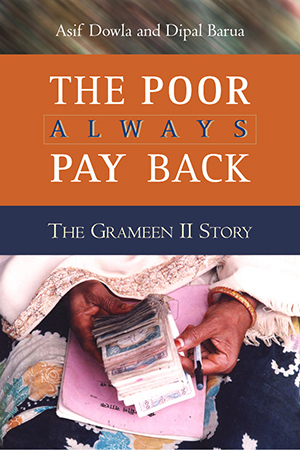The Poor Always Pay Back demystifies Grameen II, an improved and more flexible version of the classical Grameen model that has been used to financially empower the poorest families in more than a hundred countries across the globe.
Asif Dowla is a professor of economics at St. Mary's College of Maryland. Dipal Barua is the deputy managing director of Grameen Bank and the managing director of the Grameen Shakti in Bangladesh.
"Provides the definitive account of the overhaul in the design of the world’s most important microfinance institution."—Mark Schreiner, Washington University in Saint Louis
"Essential reading for institutions around the world that admire or use the Grameen approach, and a contribution to microfinance literature in general."—Stuart Rutherford, SafeSave, Bangladesh
"If the Grameen Bank is one of the great inventions of our time, 'Grameen Bank II' is one of the great re-inventions.... We should all be grateful that two long-time insiders have told the story of a remarkable transformation."—Jonathan Morduch, New York University
"Extremely useful for pro-poor bankers, supportive policy leaders of governments, and policy-oriented academics and students to have this book on their shelves."—Enterprise Development and Microfinance
"This accessible work provides considerable detail about how the bank evolved and why. Highly recommended."—Choice
"Western society characterizes the poor as 'dirty,' 'dishonest,' 'lazy,' and 'incapable of planning.' [This] book provides us with overwhelming, concrete evidence to the contrary."—Journal of International Development






